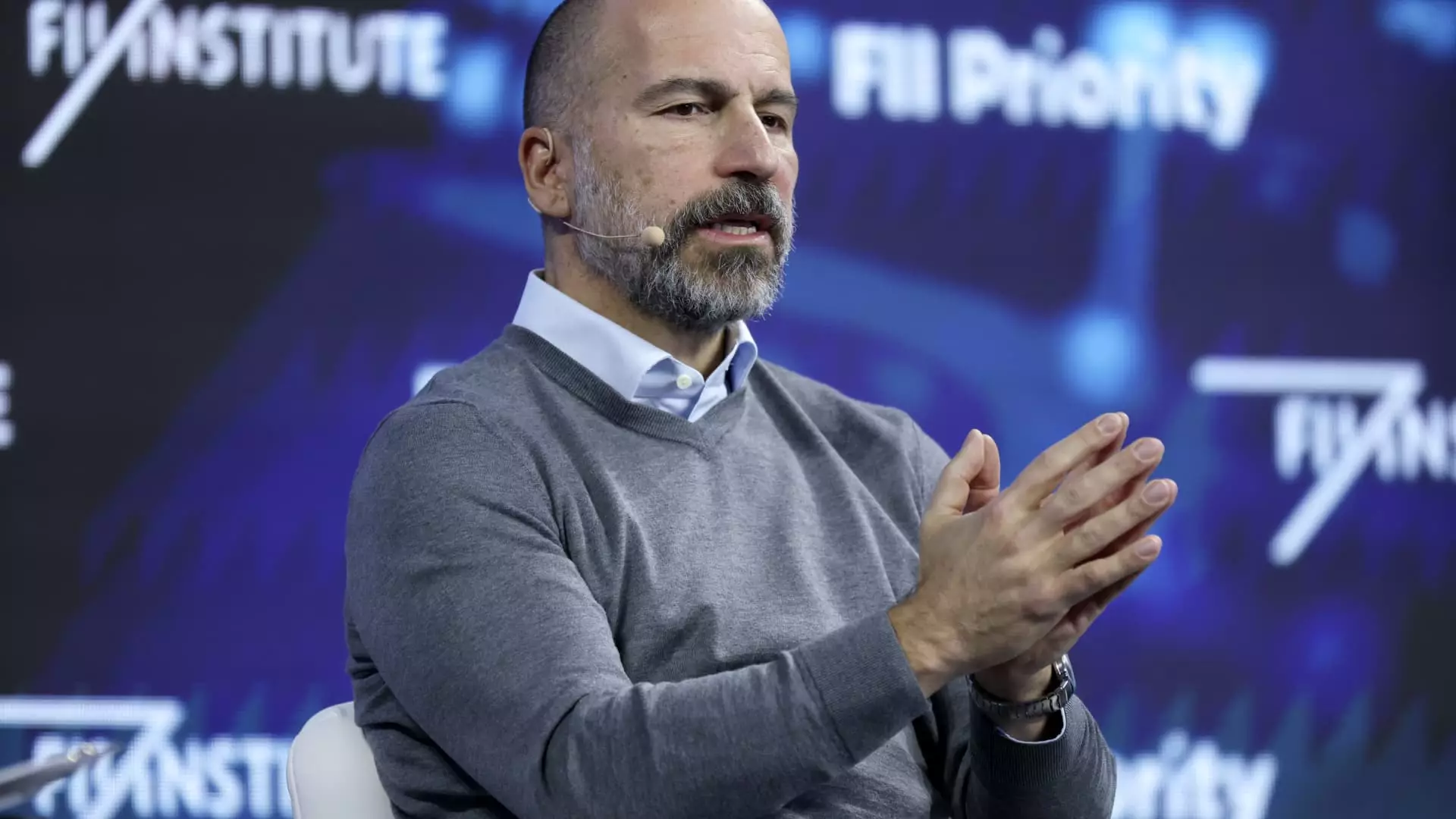Uber Technologies Inc. reported its first-quarter earnings for 2025, which presented a mixed bag of results, igniting conversations among analysts and investors. On one hand, the company exceeded expectations in terms of earnings per share, clocking in at 83 cents versus the anticipated 50 cents. This impressive jump from a net loss of 32 cents per share a year ago to profitability indicates that Uber is reclaiming its footing in a volatile market. However, the other side of the coin reveals a revenue shortfall. With reported revenues of $11.53 billion that fell slightly short of the expected $11.62 billion, Uber’s share price took a hit, declining about 5% shortly after the announcement. This juxtaposition between profit performance and revenue growth leaves many pondering the sustainability of Uber’s current business model.
The quarterly revenue showed a notable growth of around 14% compared to the same period last year when it reported $10.13 billion. However, it raises questions about whether this growth is sufficient in the face of heightened competition and shifting consumer preferences in the ride-hailing and delivery markets.
Strategic Business Insights
CEO Dara Khosrowshahi and CFO Prashanth Mahendra-Rajah laid out optimistic expectations for the upcoming quarter, projecting gross bookings to reach between $45.75 billion and $47.25 billion. This strong outlook on bookings is vital, especially when half of the company’s gross bookings for its fast-expanding Uber Eats segment come from its subscription service, Uber One, which is also experiencing rapid growth. Nevertheless, the looming lawsuit from the Federal Trade Commission regarding alleged “deceptive billing and cancellation practices” related to this subscription service presents a potential hurdle. Khosrowshahi has been quick to dismiss these allegations, encouraging users to experience the subscription’s simplicity firsthand. His confidence serves as a reminder that customer acquisition strategies hinge on transparency and trust.
Uber’s main segments, Mobility and Delivery, are still showing uptrends, with mobility bookings reaching $21.18 billion—up 13% year-over-year—and delivery bookings climbing to $20.38 billion, a 15% increase from the previous year. The consistent rise in “monthly active platform consumers,” now at 170 million, demonstrates that Uber is still capturing the market’s appetite for both ride-hailing and food delivery services.
Workforce Dynamics and Corporate Culture
In an unexpected internal move, Uber recently mandated a return to the office for employees three days a week, which contradicts the growing trend toward remote or flexible work environments. While Khosrowshahi argues that in-person collaboration is imperative for peak performance, this policy change could risk alienating talent that has grown accustomed to or even prefers working remotely. The requirement for a longer tenure for the paid sabbatical benefit from five years to eight years may further complicate employee satisfaction as the modern workforce seeks work-life balance and benefits that align with their lifestyle.
Internally, the company seems to be facing the dual challenge of attracting top talent while maintaining a vibrant corporate culture—balancing the need for in-person collaboration with the realities of a diverse workforce that values flexibility.
Innovations in Autonomous Technology
Turning our attention to Uber’s technological advancements, Khosrowshahi envisions autonomous vehicles (AVs) as the company’s “single greatest opportunity ahead.” This declaration underscores an ambitious pivot towards innovation that could redefine mobility. Uber has already made strides in this area, facilitating robotaxi rides in select U.S. markets and successfully partnering with Alphabet-owned Waymo for limited services in Austin, Texas. The initial results have reportedly surpassed expectations, with Waymo vehicles being utilized more actively than 99% of human-driven cars in the area, signaling robust demand for AV services.
However, the integration of AV technology raises not only operational questions but ethical ones as well—particularly around safety, regulatory frameworks, and public acceptance. The partnerships with various AV companies such as Volkswagen and Aurora amplify Uber’s positioning as a pioneer in a rapidly evolving segment. By fostering these collaborations and constantly innovating, Uber is working to maintain relevance in a competitive landscape.
The Road Ahead: Challenges and Opportunities
As Uber continues to navigate through mixed quarterly results, the path forward remains complex. While the metrics offer glimpses of recovery and growth, substantial challenges linger, including legal issues, workforce dynamics, and market competition. However, with strategic investments in innovations like autonomous technology, Uber demonstrates an unwavering commitment to adapt and thrive. The next few quarters will be pivotal as the company attempts to reconcile its impressive earnings potential with pressing revenue growth challenges while investing heavily in future technologies.


Leave a Reply